Banned pesticides Sharp rise in EU export trade in banned pesticides despite European Commission promises
Laurent Gaberell, September 23, 2025
In October 2020, the European Commission promised to “lead by example” and put an end to the export of pesticides banned in the European Union (EU), as part of a new chemicals strategy presented as a pillar of the “European Green Deal”. This commitment was made shortly after a report published by Public Eye and Unearthed, an investigative journalism project funded by Greenpeace UK, highlighted for the first time the extent of the trade in banned pesticides “made in Europe”.
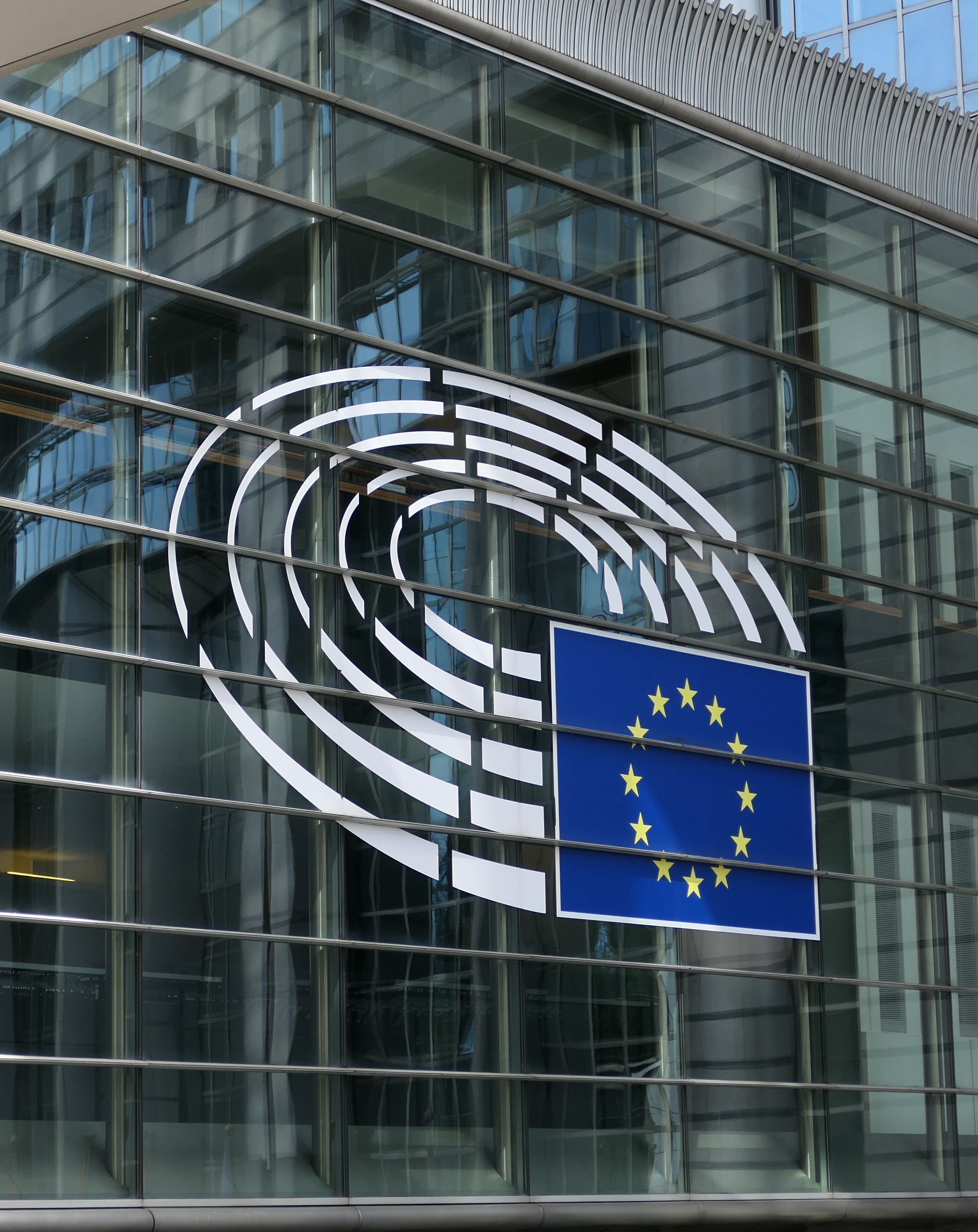 ©
Shutterstock
©
Shutterstock
“The EU would not be consistent in its ambition for a toxic-free environment if hazardous chemicals that are not allowed for use in the EU can still be produced here and then exported”, emphasized Virginijus Sinkevičius, then European Commissioner for the Environment, at the launch of a public consultation in 2023. As several Member States were starting to strengthen the rules at national level, the Commission considered the adoption of a uniform EU approach as “key to ensure harmonisation and clarity of rules”.
Now a new investigation by Public Eye and Unearthed reveals that the EU trade in banned pesticides has expanded dramatically despite European Commission promises. In 2024, EU Member States approved the export of almost 122,000 tonnes of pesticides whose use is banned on their own farms because of the dangers they pose to human health and the environment. This is a 50 percent increase compared to the 81,000 tonnes notified in 2018. Adjusted for Brexit – the UK was by far the leading exporter at the time – EU’s banned pesticide exports more than doubled in six years.
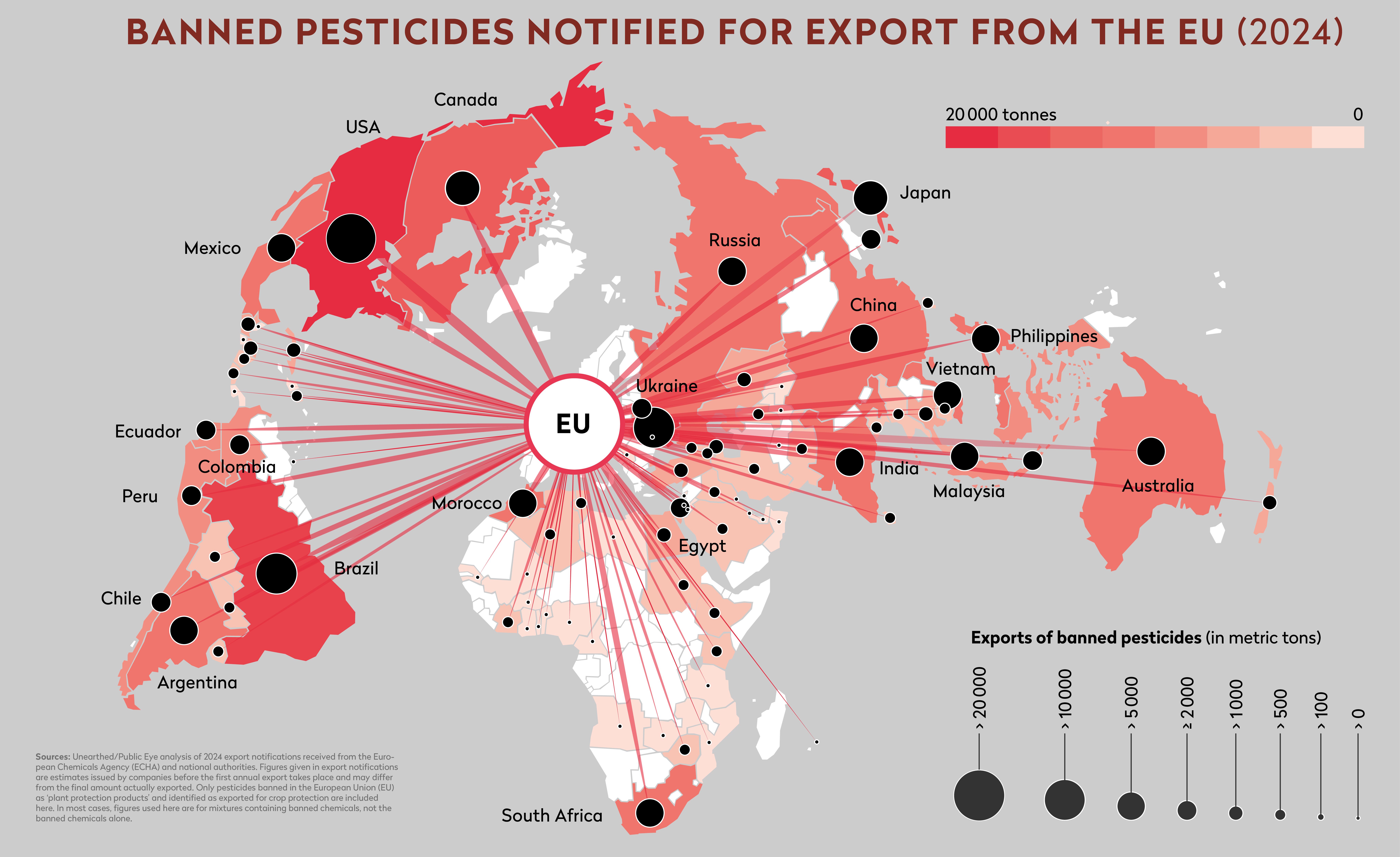 ©
opak.cc
©
opak.cc
These new revelations are based on the analysis of hundreds of “export notifications” - the documents that companies must produce before exporting chemicals that are banned in the EU - obtained by Public Eye and Unearthed under freedom of information laws from the European Chemicals Agency (ECHA) and national authorities. While the figures given in these documents are estimates issued by companies before the first annual export which may differ from the final amount actually exported, they represent the most comprehensive source of information available.
The main driver of this huge rise in EU’s export trade is that dozens of pesticides have been banned since 2018 and subsequently added to the list of chemicals that need to be exported under “prior informed consent” rules. As the EU was banning the use of these substances on its own farms, it has continued to allow companies to produce and export products made with those same chemicals. This caused a “mechanical” increase in the quantities of banned pesticides declared for export.
Switzerland’s Federal Council playing for time
Switzerland is also an exporter of banned pesticides, but there is complete lack of transparency. In 2020, the Federal Council decided to tighten the regulation and “impose stricter controls” on these exports. But the list of substances subject to the legislation has not been updated since then. As a result, dozens of pesticides recently banned in Switzerland are not subject to any kind of control and can be freely exported from the country. Having been postponed on several occasions, the update of the list was finally supposed to take place this year. However, in what appears to be a deliberate attempt to undermine the initiative adopted by the former head of the Federal Department of the Environment, Simonetta Sommaruga, Albert Rösti’s office has once again postponed this update. There is now talk of a motion being tabled next Autumn with the prospect of entering into force in early 2028.
Five years after our first unprecedented mapping, this new investigation highlights the leading role that the “Old Continent” still plays in the manufacture and export of some of the most dangerous pesticides, while Brussels now seems to be backtracking on its commitment to end this practice. The Commission has been delayed, due to strong pressures from the agrochemical lobby, and its commitment to produce a legislative proposal by 2023 remained unfulfilled. And with Trump’s return to the White House and the victory of the right-wing bloc in the last European elections, calls for deregulation are now growing. This unprecedented reform is now at risk to get shelved, just as the whole “European Green Deal” itself.
Confronted with these findings, a spokesperson for the European Commission told Public Eye and Unearthed that the commission “shares the concerns regarding the exports to third countries of EU-banned pesticides” and assured that it was “committed to addressing this important issue”. She further explained that an impact assessment had been launched in 2023 and that the Commission was currently evaluating “possible options” to implement its initiative and “ensure that the most hazardous chemicals banned in the EU cannot be produced for export”. “Ensuring a high level of protection for people and the environment, both within the EU and globally, is paramount”, she added.
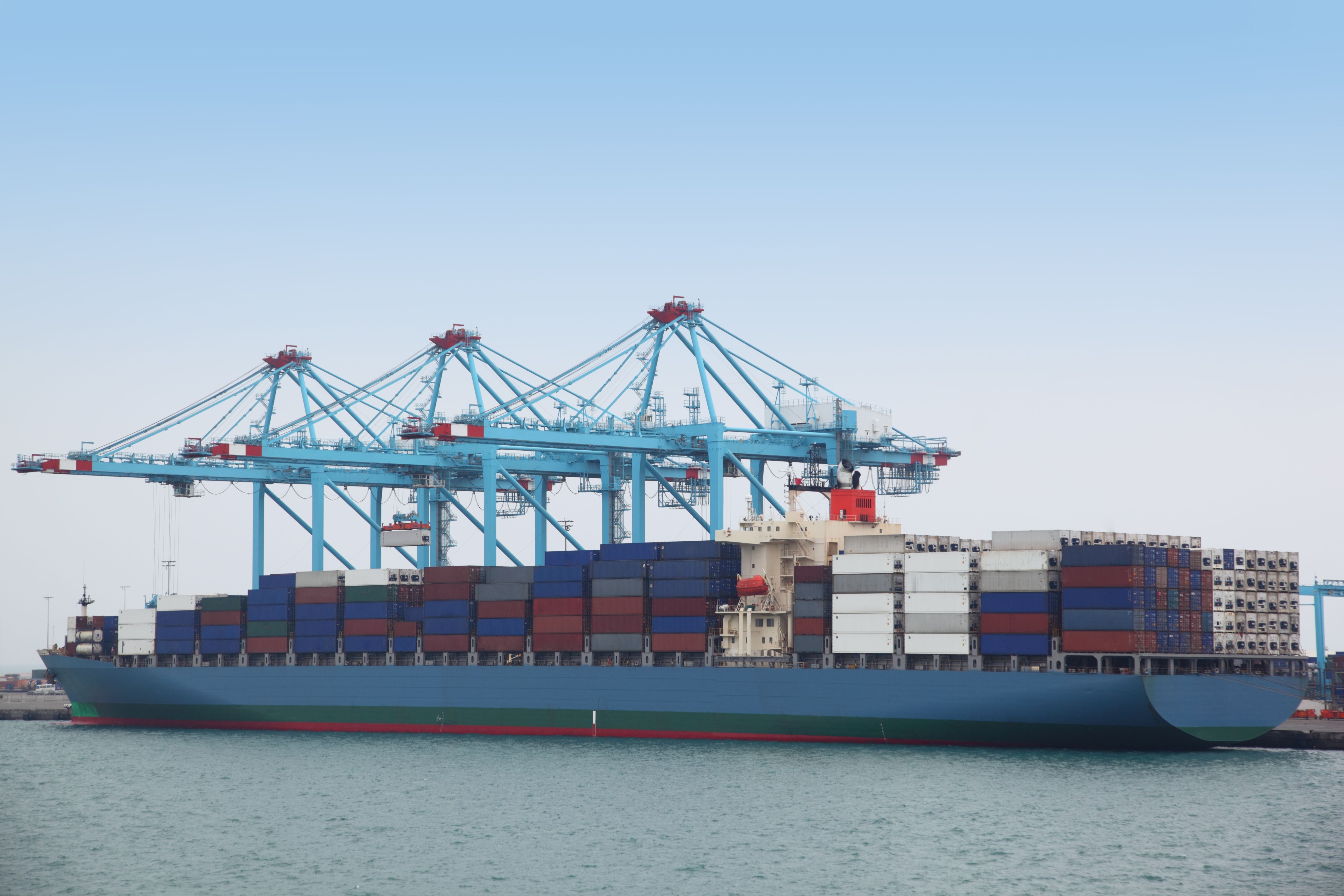 ©
Shutterstock
©
Shutterstock
Contacted by Public Eye and Unearthed, Marcos Orellana, the United Nations Special Rapporteur on Toxics and Human Rights, deplored for its part “an odious double standard” that represents a “form of modern-day exploitation whose racialized undertones cannot be ignored”. “It seems that for countries that produce and export banned pesticides, the life and health of people in recipient countries is not as important as their own citizens”, he added. “While workers and their families suffer, pesticide manufacturers profit.”
Poisons “made in Europe”
Our investigation shows that a total of 75 pesticides banned to protect human health and the environment have been notified for export from the EU in 2024. That is almost double the 41 pesticides exported in 2018.
The biggest export was 1,3-dichloropropene (1,3-D), a “soil fumigant” used in fruit and vegetable crops. Classified as a likely carcinogen in the United States, it has been banned in the EU since 2007 due to concerns about groundwater contamination and risks for wildlife. More than 20,000 tonnes of 1,3-D have been notified for export from the EU last year. Next on the list come the weedkiller glufosinate, manufactured by German chemicals giant BASF, which was banned in 2018 after it was found to damage fertility, and mancozeb, a fungicide banned in 2020 after it was classified as toxic to reproduction and an endocrine disruptor.
The EU also continues to export thousands of tonnes of neonicotinoids, the “bee killing” insecticides involved in the decline of pollinators around the world. Their use in European fields has been banned since 2019 because of “unacceptable” risks to bees. The EU itself considers that neonicotinoids pose such a serious threat to biodiversity and food security globally that it has passed a law banning the import of foods containing residues of two of these substances. Yet it keeps shipping abroad vast quantities of these same banned neonicotinoids every year. Our data shows that Syngenta and Bayer are the leading players in this trade in “bee killers” made in Europe.
High-risk destinations
In total, the EU’s banned pesticide exports were destined to 93 different countries last year. 75% of these were low- and middle-income countries, where regulations are weaker and UN agencies warn that the use of highly hazardous pesticides tends to pose the greatest risks. The United States, where legislation is much more lax than in the EU, is the largest importer, followed by Brazil, the world’s largest market for pesticides.
Nearly 15,000 tonnes of banned pesticides “made in Europe” were notified for export to the former Portuguese colony, primarily picoxystrobin, a Corteva fungicide used in cereal and soybean crops, banned in the EU in 2017 due to its genotoxic potential and high risk to aquatic organisms. “We are outraged by the increase in the exports of dangerous pesticides,” said Alan Tygel, spokesperson for the Permanent Campaign Against Pesticides and for Life in Brazil. “The fact that European countries continue to ban new pesticides for domestic use while producing these substances for export only highlights the hypocrisy of a bloc that claims to lead by example.”
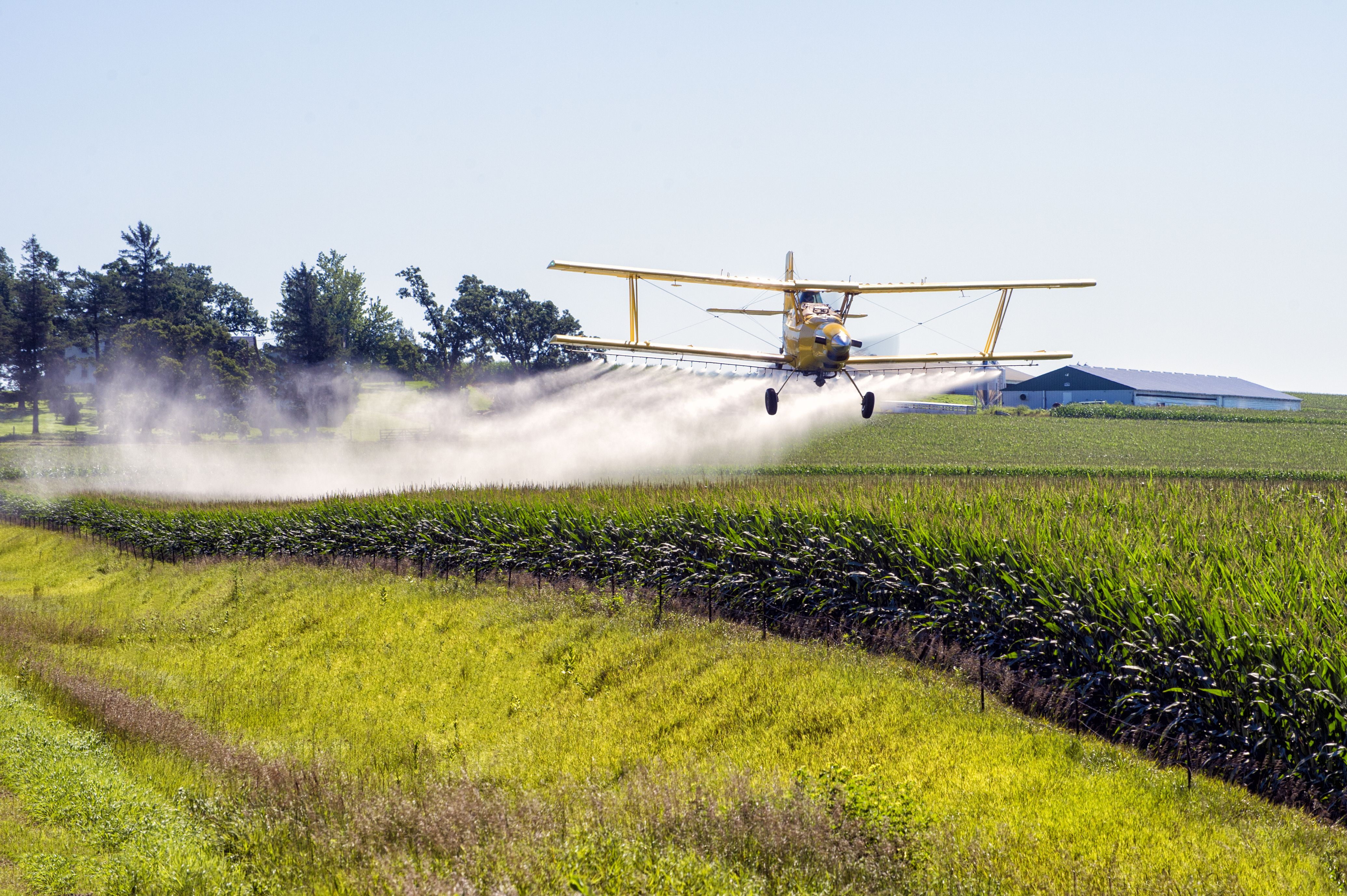 ©
Shutterstock
©
Shutterstock
Our investigation also shows that nearly 9,000 tonnes of banned pesticides have been notified for export to Africa, with Morocco and South Africa the top importers. Kara Mackay, campaigns coordinator for the South African grassroots group Women on Farms Project (WFP), told Public Eye and Unearthed that this was a “blatant, obvious double standard” which reveals “a racist and colonial thinking that Europe still suffers from”. “Sending banned pesticides to Africa, or any other low-income country, is only possible if you see the people that use these pesticides as inferior and therefore you do not have to care for their health,” Dr Mackay added. “The practice puts profit before people and we in South Africa are demanding a change. We are sick of it and literally sick from it.”
A thriving business
With more than 33,000 tonnes announced for export in 2024, German agrochemical giant BASF is by far the number one operator in this trade, followed by Teleos Ag Solutions, Agria, Corteva Agriscience and Syngenta. The Basel-based giant issued export notifications for nearly 9,000 tonnes of banned pesticides from the EU last year, the vast majority of which came from Germany.
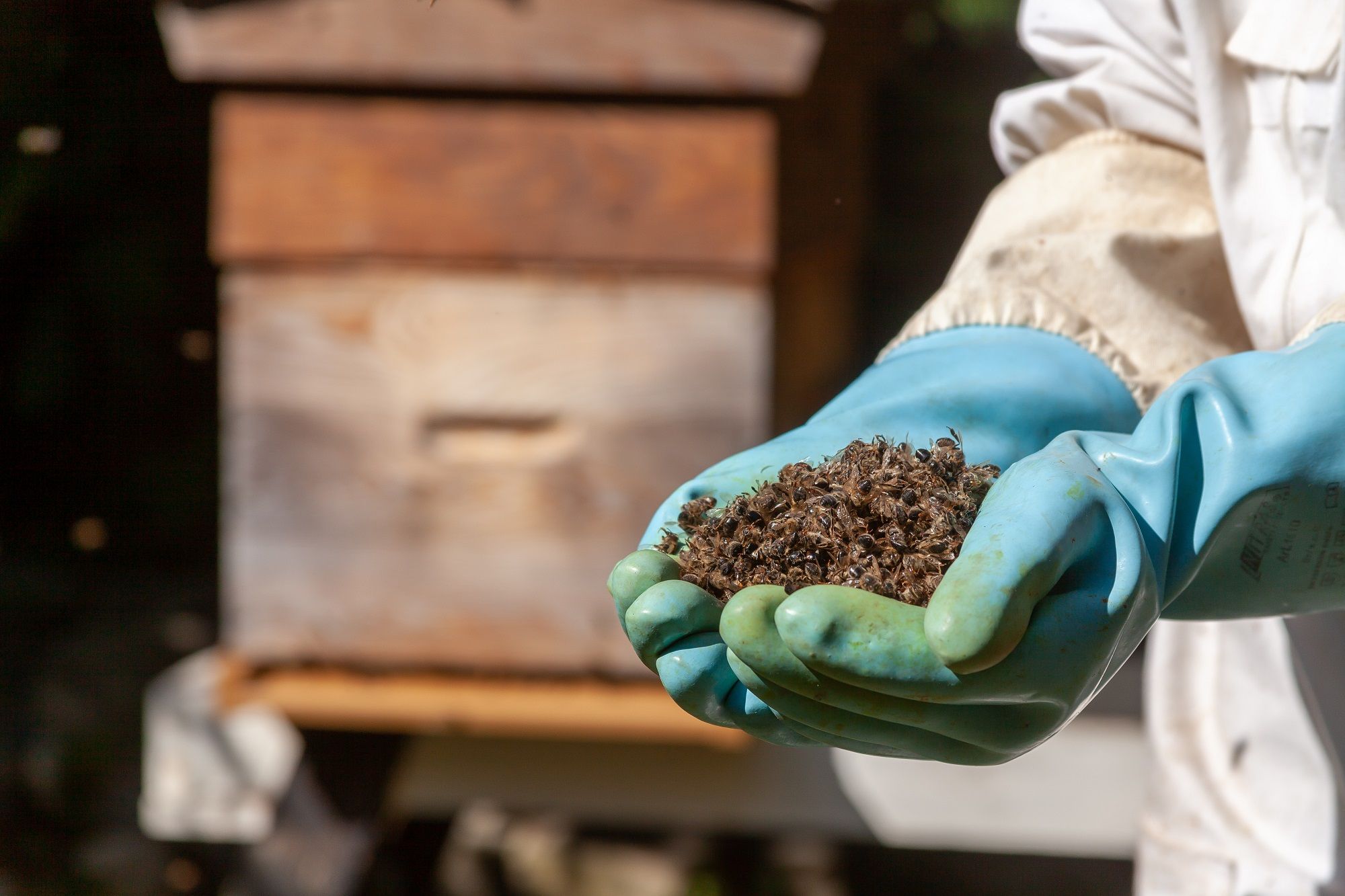 ©
Shutterstock
©
Shutterstock
More than a quarter of these volumes notified by Syngenta were products based on thiamethoxam, one of the “bee-killing” neonicotinoid insecticides. The Swiss multinational’s main exports also include propiconazole, a fungicide banned in 2018 after it was found to be toxic to reproduction and a groundwater contaminant. And chlorothalonil, another fungicide banned on European farms after it was classified as a likely human carcinogen by EU authorities, which recently hit the headlines due to extensive drinking water pollution in Switzerland and France, but also in Costa Rica, as we revealed in a previous investigation.
Confronted with our findings, Syngenta stated that all its exports “comply with the strict requirements of European chemicals regulation” and that it “respects the sovereignty and direction of the importing country, meets all the international regulatory requirements [...] and provides stewardship and detailed information in country to promote the safe application by end users.” A spokesperson of the Basel-based giant stressed that “agricultural needs differ globally” and explained that its factories are concentrated in “only a few places around the world” to ensure that its compounds “meet the stringent production standards and have the highest quality”.
Syngenta's UK poison
The Basel-based agrochemical giant Syngenta also exports banned pesticides from the United Kingdom. And huge volumes are involved. The largest export was diquat, a herbicide banned in the European Union because of its acute toxicity and “high risk” to farmers and people living near fields, which Syngenta continues to manufacture for export at its Huddersfield plant. The majority of these volumes were destined for Brazil, where cases involving poisoning of farmers are on the rise, as we highlighted in a report in the state of Paraná.
Syngenta also continues to ship thousands of tonnes of paraquat, a notorious weedkiller implicated in tens of thousands of poisoning cases around the world. In the United States, the largest importing country, the group is being targeted by lawsuits from hundreds of farmers that have Parkinson’s disease. They blame paraquat and the Swiss multinational for not having warned them of the risks associated with using this product.
In total, more than 40 percent of the volumes exported by the EU were notified from Germany. This country, which has seen its exports increase sixfold, from around 8,000 tonnes in 2018 to over 50,000 tonnes last year, has become the main European hub for the trade in banned pesticides. A main reason for this surge is the ban imposed on glufosinate at the end of 2018, and a subsequent increase in its exports. It is also partly explained by the fact that Syngenta has moved some of its activities to Germany, in particular from France, where a law imposing export restrictions on banned pesticides came into force in 2022. Belgium, which followed with a royal decree last May, was the second largest exporter in 2024, followed by Spain, the Netherlands and Bulgaria.
“Double standards”
At a demonstration in Brussels at the end of June, a coalition of more than 600 NGOs and trade unions, of which Public Eye is a part, called on the President of the Commission Ursula von der Leyen to keep her promise by finally putting an end to the exports of banned pesticides from European soil. The NGOs criticize the Commission’s inaction and its “double standards”, which undermine the EU’s credibility and global leadership in the protection against hazardous chemicals. It also poses “an unacceptable risk” to communities in low- and middle-income countries. The coalition also highlights a risk for consumers who are exposed to residues of banned pesticide found in imported foods, as well as the “unfair competition” for European farmers, who are not allowed to use these substances.
 ©
Pesticide Action Network (PAN)
©
Pesticide Action Network (PAN)
These statements resonate in a letter sent in December 2024 to the new Commissioner for the Environment, Jessika Roswall, by Denmark, Austria, France, Luxembourg, the Netherlands, Norway and Sweden, calling on the Commission to work without delay towards an EU-wide ban on exports of banned pesticides. “I believe we have a moral and we have an ethical responsibility to protect citizens’ health and the environment, not only in the EU but also outside the Union”, said Magnus Heunicke, Denmark’s environment minister. “This is a matter of moral and political responsibility.”
The agrochemical giants have not yet prevailed.

